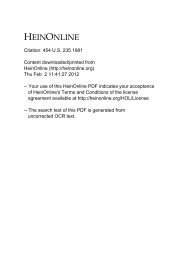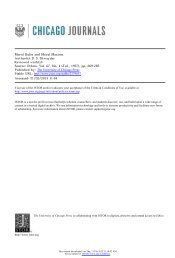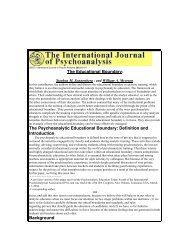Coagulation Factors in Controlling Traumatic Bleeds: FFP, PCC, or ...
Coagulation Factors in Controlling Traumatic Bleeds: FFP, PCC, or ...
Coagulation Factors in Controlling Traumatic Bleeds: FFP, PCC, or ...
You also want an ePaper? Increase the reach of your titles
YUMPU automatically turns print PDFs into web optimized ePapers that Google loves.
i. Patients with none of these risk fact<strong>or</strong>s had 1% chance of develop<strong>in</strong>g life-threaten<strong>in</strong>g<br />
coagulopathy 11<br />
ii. Patients with coagulopathy on admission had significantly higher m<strong>or</strong>tality rates than those with<br />
n<strong>or</strong>mal clott<strong>in</strong>g on admission (46% vs. 10.9%) 12<br />
iii. Abn<strong>or</strong>mal admission PT <strong>in</strong>creases adjusted odds of dy<strong>in</strong>g by 35%; abn<strong>or</strong>mal aPTT <strong>in</strong>creases<br />
adjusted odds of dy<strong>in</strong>g by 326% 13<br />
1. PT: evaluates adequacy of the extr<strong>in</strong>sic pathway; clott<strong>in</strong>g ability of fact<strong>or</strong>s I, II, V, VII, X 14<br />
2. PTT: measures efficacy of both the <strong>in</strong>tr<strong>in</strong>sic and common coagulation pathways; evaluates<br />
fact<strong>or</strong>s I, II, V, VIII, IX, X, XI, and XII 14<br />
WAR FAR IN<br />
VI. Warfar<strong>in</strong> + Trauma = Bad 4,17<br />
a. Increas<strong>in</strong>g need to manage trauma patients who receive anticoagulation<br />
i. Expand<strong>in</strong>g warfar<strong>in</strong> use due to expand<strong>in</strong>g ag<strong>in</strong>g population<br />
1. Use <strong>in</strong>creased from 2.3% to 4.0% from 2002 to 2006<br />
2. Use <strong>in</strong> patients > 65 years <strong>in</strong>creased from 7.3% to 12.8% from 2002 to 2006<br />
3. 1-10% annual <strong>in</strong>cidence of maj<strong>or</strong> bleed<strong>in</strong>g <strong>in</strong> warfar<strong>in</strong> patients<br />
ii. Increas<strong>in</strong>g trauma rates <strong>in</strong> patients ≥ 65 years<br />
1. 2009: 20.8% trauma cases <strong>in</strong> patients ≥ 65 years – <strong>in</strong>creased from 15.3% <strong>in</strong> 2004<br />
b. <strong>Traumatic</strong>ally <strong>in</strong>jured patients receiv<strong>in</strong>g warfar<strong>in</strong> at higher risk f<strong>or</strong> severe <strong>in</strong>tracranial hem<strong>or</strong>rhage and<br />
uncontrolled bleed<strong>in</strong>g<br />
i. Four- to five-fold <strong>in</strong>creased risk of death <strong>in</strong> anticoagulated trauma patients vs. non-anticoagulated<br />
trauma patients 18<br />
ii. Increased anticoagulation <strong>in</strong>tensity <strong>in</strong>creases risk of hem<strong>or</strong>rhagic events 19<br />
1. 98,900 patient years of observation<br />
2. Evaluated how under- and over-anticoagulation <strong>in</strong>fluence patient outcomes<br />
3. Compared with INR 2.0-3.0, relative risk of hem<strong>or</strong>rhagic events was 2.7 (absolute risk<br />
3.7%/year) at INR 3.0-5.0, and 21.8 (absolute risk 30.1%/year) f<strong>or</strong> INR >5.0<br />
iii. Rapid reversal of anticoagulation <strong>in</strong> trauma patients necessary to prevent <strong>or</strong> m<strong>in</strong>imize<br />
hem<strong>or</strong>rhagic complications<br />
1. Protocol of rapid identification of <strong>in</strong>tracranial bleed<strong>in</strong>g and warfar<strong>in</strong> reversal decreased<br />
<strong>in</strong>tracranial hem<strong>or</strong>rhage progression and reduced m<strong>or</strong>tality 20<br />
VII. Pharmacology 15<br />
a. Vitam<strong>in</strong> K antagonist (VKA)<br />
b. Commonly prescribed f<strong>or</strong> treatment and prevention of thromboembolic events<br />
c. Inhibits enzyme, vitam<strong>in</strong> K epoxide reductase (VKORC1)<br />
blocks f<strong>or</strong>mation of reduced vitam<strong>in</strong> K from vitam<strong>in</strong> K epoxide<br />
i. Reduced f<strong>or</strong>m of vitam<strong>in</strong> K required f<strong>or</strong> biological activity of extr<strong>in</strong>sic coagulation fact<strong>or</strong>s<br />
d. Response to warfar<strong>in</strong> <strong>in</strong>fluenced by several fact<strong>or</strong>s (medications, diet, pharmacogenomics, etc.)<br />
e. PT used <strong>in</strong> cl<strong>in</strong>ical practice as a therapeutic response marker<br />
i. INR used to standardize its rep<strong>or</strong>t<strong>in</strong>g [INR = (patient PT/mean PT) ISI ]<br />
ii. Moderate <strong>in</strong>tensity anticoagulation (INR 2.0-3.0) recommended f<strong>or</strong> most <strong>in</strong>dications<br />
iii. Safety and efficacy depend on ma<strong>in</strong>ta<strong>in</strong><strong>in</strong>g INR with<strong>in</strong> therapeutic range<br />
VIII. Questions to answer<br />
a. What treatment strategies should be used <strong>in</strong> traumatic bleed<strong>in</strong>g patients on warfar<strong>in</strong> pre-<strong>in</strong>jury?<br />
b. What treatment strategies should be used <strong>in</strong> traumatic bleed<strong>in</strong>g patients NOT on warfar<strong>in</strong> pre-<strong>in</strong>jury?<br />
R. Sohraby 5

















